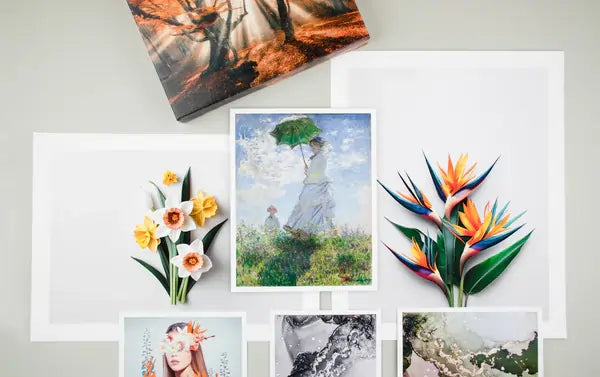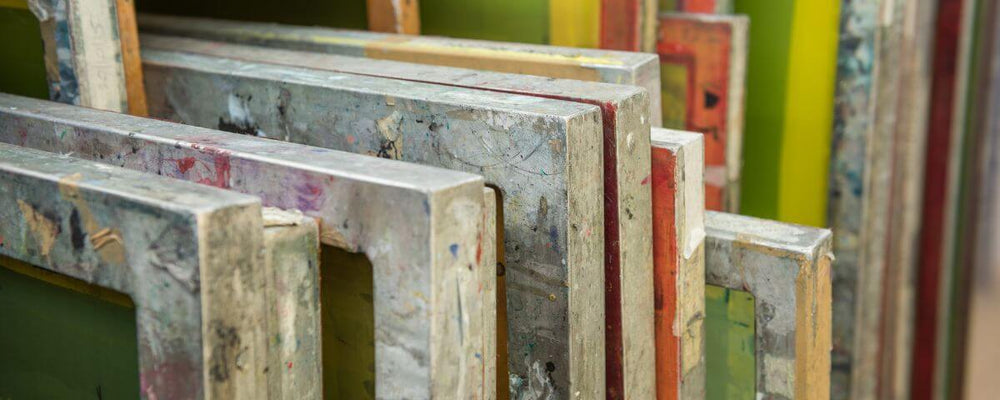The terms “fine art,” “archival quality,” and “museum quality” often go hand in hand when you hear photographers and digital artists talk about their prints. However, if you don’t know what this printing is, keeping up with the hype can be challenging.
Consider this article as a guide to fine art printing and what artists should know about the process.
Background to Fine Art Printing
Fine art printing refers to the method that uses archival ink from inkjet printers to create professional-grade photographs on high-quality material.
Also known as giclée printing, the technique creates images without light sensitivity or chemistry. Fine art printing uses a combination of materials to prevent color fading, yellowing, cracking, and wear.
Differences in Photographic Prints
Not to be confused with photographic technique, fine art printing utilizes high-quality fine art paper to create original artwork. This type of paper doesn’t contain acid that could react with inks and cause image deterioration over time.
On the other hand, photo printing is a reproduction of a photograph or original artwork. The method uses pre-treated light-sensitive material, which is the reason for its distinctive polished, glossy finish.
Fine Art Printing Methods
There are various types of fine art printing to choose from when producing impressions; however, the most historically powerful techniques are the following:
Etchings
Etchings have a subtle contrast using mainly black and white hues, part of the famous technique. Typically engraved in a material, etchings are unique in their use of a special acid-resistant varnish to create a ground layer. The artist can then scratch away with a metal stylus when creating imagery.
After the print is complete, the plate undergoes a total submersion in acid to allow the solution to eat away at the metal. This exposes areas and creates recesses that contain the ink.
Afterward, the plate is ready for removal, inking, and pressing; the final result is an intricate design in reverse on a piece of damp, felt paper.
Screen Printings
Screen printing is a widespread technique that is standard in producing bold artwork, posters, and canvas. Conversely, artists also use this method to print textiles and fabrics and create various products like clothing.
The process uses mesh to transfer ink onto impermeable, primed material to prevent oversaturation. Also known as a “stencil method,” the process involves a stencil that covers specific areas while forcing ink into exposed mesh openings and creating images with a fill blade or squeegee.
Lithographs
Lithography is an older technique utilizing greasy crayons or tusche as a medium to create imagery on polished limestone slabs. The artist may also use aluminum plates as their canvas before applying a chemical mixture across its surface to bond the process.
After more chemical reactions with gum arabic, lithotine, and asphaltum, the limestone is ready to act as a stencil to transfer reverse compositions onto a damp sheet of paper.
Oleographs
Oleographs involve chromolithography and use a range of 15 to 20 different colors to create oil painting-styled prints. The artist uses stamping to imitate canvas and brush strokes before adding yellow hues to further portray age authenticity.
Giclée Printing
As previously mentioned, this form of fine art printing uses archival papers, printers, and ink to create two-dimensional artwork. High-quality prints often start with a higher resolution of 250 DPI or more, then use color accuracy of 9 to 12 ink sets to produce artwork on matte paper.
Creating Fine Art Prints
When producing fine art prints, it helps to note the process the creator or artist uses to ensure the maximum quality.
Step 1: Formatting Files
Image file formats describe the image storage data and how much it can retain. When creating a fine art print of artwork or a landscape, a creator will notice the option of storing image data in a compressed and uncompressed format. The most common is JPEG or TIFF to preserve editing layers.
Step 2: Setting Image Resolution
Image resolution is crucial to artistry and creating superior prints. Artists don’t want to end up with granulated images that negatively impact the overall presentation of their print. Images would be well depicted at 250 DPI, but the value can vary given the material you print your image on.
Step 3: Monitor Calibration
When creating fine art prints, the need for a high-quality monitor to calibrate and profile is crucial, as they provide exclusive insight into an image’s creation before printing. Artists typically calibrate basic parameters like brightness, contrast, white and black point, then adjust profiles to support calibration.
Step 4: Sharpen Images
Whether printing artwork or digital depictions, artists sharpen images to enhance detail within an image before printing. However, excessive sharpening can affect color accuracy and degrade the print.
Step 5: Test Printing
This step is necessary to ensure that the print finalizes on the media on which it will run. The artist can evaluate the file’s state and outcome while providing feedback to fulfill the artistic vision. After this step, the artist can sign off on the final proof and keep a reference print for future runs.
Step 5: Printing and Certification
After test runs and proofing, the print undergoes finalization and trimming to specification and evaluation against the reference print. Afterward, prints are packaged and given with a certificate of authenticity.
Copyright Law
An artist owns the right to their image, making it part of their intellectual property. If someone else uses their property without permission, it can result in legal action and penalties for infringement.
Final Recommendations
Artists should know that fine art printing is an extensive process requiring attention to detail and knowledge in print processing to ensure a final quality product. For artists looking to practice fine art printing, you may experience frustration, but it helps to be patient with yourself.
Some respectable vendors will consider and prioritize your print needs. When wondering where to get fine art prints made, consider The Stackhouse as the business to get the job done. We will work with you and offer solutions and options that can make your images shine and contribute to your success.






Leave a Comment